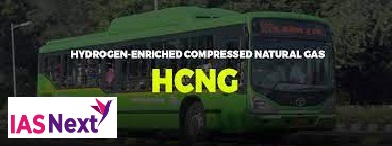CURRENT AFFAIRS
Get the most updated and recent current affair content on Padhaikaro.com
Hydrogen-enriched compressed natural gas (HCNG)
- IAS NEXT, Lucknow
- 02, Dec 2021

Reference News: .
There is an increased push for adopting "Hydrogen-enriched compressed natural gas (HCNG)". This comes in the backdrop of India’s National Hydrogen Energy Mission in the works, which may mandate fertilizer, steel and petrochemicals industries to shift to green hydrogen use.
Background:
The Bureau of Indian Standards (BIS) has also developed specifications (IS 17314:2019) of Hydrogen enriched Compressed Natural Gas (H-CNG) for automotive purposes, as a fuel.
What is HCNG?
The blending of hydrogen with CNG provides a blended gas termed as HCNG.
- It can be used in place of gasoline, diesel fuel and propane (C3H8) / LPG and its combustion produces fewer undesirable gases.
Advantages of HCNG:
- HCNG reduces emissions of CO up to 70%.
- Enables up to 5 % savings in fuel.
- First step towards future Hydrogen economy.
- Engines can be calibrated to release lower amounts of NO.
- Engines need minimum modification to run on HCNG.
- Ideal fuel for high load applications and heavy-duty vehicles.
- Better performance due to higher Octane rating of H2.
Disadvantages of using HCNG:
- Determining the most optimized H2/ NG (Natural Gas) ratio.
- It requires new infrastructures for preparing HCNG.
- Many steps need to be taken for commercializing it at a large scale.
- Current cost of H2 is more than the cost of Natural Gas. So, HCNG’s cost is more than CNG.